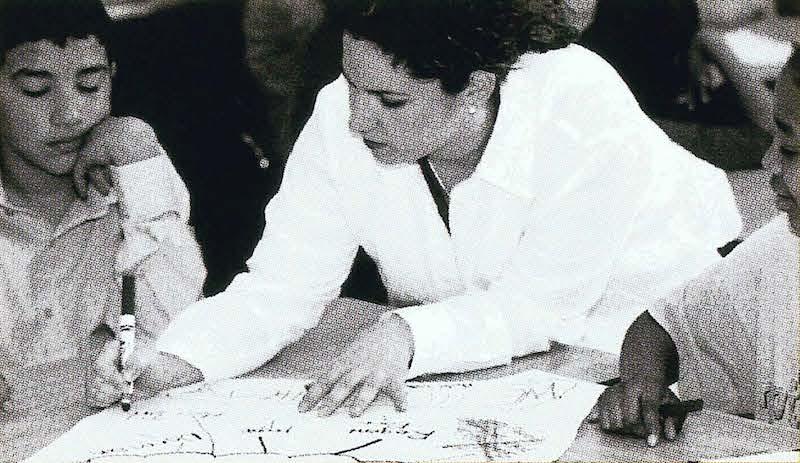
G.H.E.T.T.O. Dolls
Anybody who works in an inner-city school has likely heard students mock one another by referring to others as “Ghetto.” They use this as a derogatory term that implies poor quality or of limited means. I wanted to challenge my combined grade 7 and 8 students’ perception of this word and push them to think deeply about the power of language.
I began by posting a sign that asked “Are you G.H.E.T.T.O?” The students were infuriated S I capitalized on their fury and began teaching the history of the term. We then wrote acrostic poetry using the word. Their work was outstanding. Poems ranged from “Giving Help Especially to Those Oppressed to Getting Higher Education to Teach Others, to Great Heroes Emerge Through Tough Obstacles."
Coincidentally, a week later, an article about a new line of ghetto doll toys appeared in The Toronto Star. The product line was modelled after the Cabbage Patch dolls, except the ghetto dolls were from inner-city communities. They were sold in packages that had them standing next to garbage cans. Each doll had a story about how they endured horrendous problems, including major drug addiction and incarcerated parents. These dolls were supposed to be representative, but in fact they simply perpetuated negative stereotypes.
Students went to the toy manufacturer’s website www.ghettokidshood.com and read the very unrealistic stories that accompanied each doll. The whole class brainstormed more realistic issues. Then, students separated into groups to work on the issue they had chosen to develop further.
Their assignment included the following components:
- Create a new ghetto doll.
- Develop a story to accompany the doll.
- Create a Problem-Solving Guide (PSG) to include with the doll. The PSG had to have at least two authentic approaches to solving the problem.
- Develop a skit to accompany a class presentation on the group’s doll.
The image of the dolls took on a new dimension. Young people were helping young people. The “ghetto” image was no longer central. Instead, the issues the doll confronts became the focus. In developing this part of the assignment, we envisioned parents in a toy store buying the doll because it addressed a particular issue they wanted to discuss with their own child. For example, rather than purchasing a generic “ghetto” doll, they could now choose a “smoking” doll. Other issues the groups worked on included skipping school, gangs, playing with matches, rape, self-esteem, being yourself, stealing, bullying, suicide, how to approach your parents, domestic violence and peer pressure.
This shift in focus helped alleviate the emphasis on stereotypical ideas. Instead, the emphasis moved to helping pre-adolescents explore and define their identities. It also helped them to find ways to deal with some of the real challenges they were experiencing.
While the students were finishing their presentations, The Toronto Star published a second feature about the ghetto dolls. As a class, we decided to write to Teddi Toys in Chicago, and to the newspaper. We invited our school’s music teacher, Lance Anderson, to share his knowledge of writing formal letters and his experience in getting these letters published.
Moira Brummell, a York University student teacher who was doing her practicum in our school, outlined detailed lesson plans and taught a unit based on Irwin’s First Steps Writing Developmental Continuum. Finally, our letters were mailed.
To our surprise, both organizations responded. The editor of The Stars Letters to the Editor section, Gabriel Gonda, said that too much time had elapsed between The Stars publishing the articles on the ghetto dolls and receiving our letters. The issue was no longer timely. However, he offered to visit our class on his day off and talk with students about being a journalist.
The students enjoyed this visit enormously. Gabriel told them how newspapers work and, more importantly, validated the students’ work and their opinions in a very genuine way. After the visit, each student wrote Gabriel a thank-you letter. Gabriel also helped by giving our letters to the editor of The Stars “Life” section. That contact led to another journalist coming to our class and writing a feature about our work.
Teddi Toys committed to responding to every student, and to visiting the school in May when company representatives would be in Toronto. The company may well manufacture a new line of dolls, using some of the new definitions for “ghetto” we have created.
The project continues to evolve. The students are 100 per cent invested in it. It is beginning to change their perceptions of themselves. However, the project would not have been as successful if certain partnerships had not been in place.
The Toronto District School Board has designated Nelson Mandela Park Public School as a Later Literacy School. This designation gives us additional resources. We are also a partner school with York University’s Faculty of Education. In developing the unit, I worked closely with Barbara Schwartz, our school’s literacy co-ordinator. As well, our principal, Carter Logan, and our vice-principal, Marcia Pate, supported us at every stage. Schools such as ours thrive when such a positive infrastructure exists.
Ainsworth Morgan teaches a combined grade 7 and 8 at Nelson Mandela Park Public School, Toronto. Barbara Schwartz is the literacy co-ordinator at Nelson Mandela Park Public School. Curriculum Connections
The G.H.E.T.T.O. Dolls project met many of the overall expectations outlined in the Ontario Curriculum Grades 1 to 8: Language. Specifically. Grade 7 Writing, Grade 7 Reading, and Grade 7 Oral and Visual Communication.
